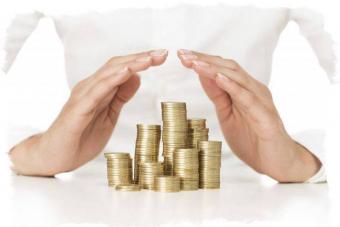Swedish model of economic development The term "Swedish model" appeared in the late 1960s, when Sweden began to experience a combination of rapid economic growth with successful political reforms. The image of a successful and serene Sweden still contrasts with the growth of social and political conflicts in the outside world.

The Swedish model The Swedish model The main role in the model is assigned to social policy, social justice, equalization of incomes, smoothing out inequalities, building democratic socialism on the basis of welfare. full employment policy implementation of full employment policy; equalization of income equalization of incomes of the population through taxes; high share of the public sector of the economy; redistribution of budgetary funds redistribution of budgetary funds in favor of social programs; availability of social guarantees availability of social guarantees to all segments of the population (education, healthcare); influence of trade unions increased influence of trade unions on all spheres of the socio-economic life of the country.

Strengths: full employment and income equalization; redistribution of funds for social and economic purposes a centralized system of collective agreements with the participation of powerful trade union organizations solidarity between groups of workers an active policy in a highly developed labor market and a large public sector (redistribution area) government spending at record levels High welfare taxes

Sweden's economy Main sectors Resources (timber, iron ore) Hydropower Engineering Mechanical engineering Aircraft construction Nuclear power Arms Automotive industry Telecommunications .GNP per capita in Sweden thousand crowns (US dollars). Three stages can be distinguished in the economic development of Sweden: (from 1870 to 1914) (from 1870 to 1914) Sweden has turned from an agrarian into an industrial-agrarian country. (from 1920 to 1970) (from 1920 to 1970) Sweden became an industrialized country. (from 1970 to the present) (from 1970 to the present) Sweden is at the stage of a post-industrial country with a high standard of living, which stands out among other states with high growth rates.


National idea The political system, management experience, neutrality in any blocs and associations - that's what we should learn from this country. -Sporting nation -Environmental obsession -Animal welfare -Free dental services -Alcohol and tobacco import controls PROS Sweden's usual PROS Once you've passed your probationary period and signed an employment contract with an employer, it's almost impossible to fire you from your job, even if you've done something something out of the ordinary is how strong the union in Sweden is. The country has a high rating in the ecology category, and 95% of the population is satisfied with the quality of drinking water.

Economic indicators of Sweden and Ukraine for 2012. Indicators SWEDEN UKRAINE GDP, billion dollars $368.4 billion, $173.9 billion GDP per capita, dollars $$7300 Gold and foreign exchange reserves, billion dollars $125.7 $36.4 Unemployment rate, % 0.9%1, 8%

Conclusion The Swedish experience is that strong and well-organized labor market policies are highly productive and actually an efficient way of using taxpayers' money. Social policy and labor market regulation is what attracts the most attention in the Swedish model.

slide 3
The mixed nature of the Swedish economy, combining market relations and state regulation, the prevailing private ownership in the sphere of production and the socialization of consumption.
slide 4
Full employment and income equalization Goal
slide 5
"functional socialism"
Socialism based not on the elimination of private property and a radical change in the management of production, but on the implementation by the state of the function of redistributing national income in accordance with the priority of social needs in order to achieve greater social equality.
slide 6
A priority
Solving the problems of social security of their subordinates, employees of enterprises and firms.
Slide 7
The essence of the Swedish management model
The state does not interfere in the production activities of the enterprise
Slide 8
Active labor market policies should minimize the social costs of a market economy
Slide 9
Emphasis is placed on infrastructure elements and collective cash funds.
Slide 10
The specifics of the relationship between labor and capital in the labor market
slide 11
Management style
Considering the person in the business environment comes first
slide 12
Equality All people are valuable, regardless of their different abilities.
slide 13
difference
The Swedish management style is less hierarchical compared to other cultures: informality in relationships, a slight difference in the status of managers and employees, non-strict and informal planning of the organizational structure.
Slide 14
Control. Even in large Swedish companies, control looks informal and implicit.
slide 15
contradictions
The Swedish model has its own internal contradictions. Employees need to be given room to make their own decisions, but there must be clear boundaries that they must not cross.
slide 16
Usage
The need to consider it as a Swedish model, because it is associated with some important cultural characteristics of the Swedish nation. Further, as noted above, the Swedes are very successful in adapting to conditions of uncertainty. They are not inclined to exaggerate their position in the official hierarchy. All this enables managers to give wide responsibility to their subordinates in the field of business.
Slide 17
Goals
1) Full employment and equality 2) Combination of general restrictive measures and active labor market policies 3) General welfare policy and trade union solidarity policy in the field 4) Full employment without inflation 5) Active labor market policy.
View all slides
Ministry of Education of the Republic of BelarusBelarusian National Technical University
Faculty of Civil Engineering
Department of Construction Economics
Subject "Foreign economic activity"
"ECONOMIC ANALYSIS OF SWEDEN"
student gr.312329 of the correspondence department
Patsenko T.V.
Supervisor
Gurinovich A.D.
Minsk 2015. CONTENTS:
1.
2.
3.
4.
5.
6.
general characteristics of the country;
characterization of natural resources;
production (industry, agriculture);
analysis of macroeconomic indicators;
analysis of the country's balance of payments and foreign trade;
characterization of economic and political ties with
Belarus;
7. conclusion with analysis that we can export and
import from this country. Sweden
flag
coat of arms
Political system
Sweden-
a constitutional monarchy. The Constitution of 1975 is in force.
The head of state is the king. The state is governed by the government at the head
with the prime minister, who is chosen by the parliament - the Riksdag), based in
1435. Since 1971 it has been a unicameral parliament, consisting of 349 deputies elected by
universal direct and secret suffrage every 4 years. Party or coalition
who won the majority of seats in the elections to the Riksdag, form a government headed by
with the Prime Minister, who holds the executive power.
The current King of Sweden since 1973 is Carl XVI Gustaf.
State structure of the Kingdom of Sweden
determined
constitution
And
others
fundamental laws such as
Law on the form of government,
Position
O
Riksdage,
Law
O
succession to the throne and the Freedom of the Press Act.
King Carl XVI Gustaf Total area: 449,964 km2, the third largest country in the West. Europe
Population: 9,723,809
Capital: Stockholm (871,952 people)
Large cities: Gothenburg (524,767 people), Malmö (309,912 people), Uppsala (140,454 people)
Language: Swedish; recognized minority languages: Sami, Finnish,
Tornedal dialect of Finnish (Meänkieli), Yiddish, Gypsy (Romani Chib).
Religion: 82% belong to the state Evangelical Lutheran
churches.
The current economic system in Sweden is usually characterized by
as “a mixed economy that combines the main forms of ownership:
private, state, cooperative”. About 85% of all Swedish
companies employing more than 50 people are owned by a private
capital. The rest is accounted for by the state and cooperatives.
Natural resources
The bowels of Sweden are rich in metals and poor in mineral fuels.Limited by the location of sedimentary rocks determined
the practical absence of deposits of coal, oil and
natural gas. Swedish iron - ore deposits
are among the richest in the world, both in terms of concentration of ore reserves,
as well as the content of metal in it. Among the deposits of colored
metals, the most significant are located on the Norrland
plateau. This is a deposit of complex sulfide ores in the area
Buliden - Christineberg containing: copper, zinc, lead, gold,
silver, gray pyrite, arsenic, lead deposit
(Leisvall) and copper (Aitik).
Sweden is the main exporter of iron ore and the largest
Europe.
In terms of iron reserves - about 3 billion tons with an average grade
metal over 60% - Sweden ranks second in the Foreign
Europe (after France).
Industry
Sweden ranks 2nd in Europe in terms of iron ore mining. In the countryferrous and non-ferrous metallurgy is quite well developed, as well as
electrometallurgy.
Swedish steel is of the highest quality.
Sweden produces cars and trucks, marine vessels,
airplanes, computers and electrical appliances. The country is in first
place in the world for the production of ball and roller bearings.
The woodworking industry is well developed. Sweden occupies
leading place in the world in the development of the pulp and paper industry.
There are also chemical, textile and food enterprises in the country.
industry.
Agriculture
Only 3% of the working population is employed inagriculture, but this industry is so
highly developed and mechanized that its
products
enough
Not
only
For
meet domestic needs, but
and for export. Sweden provides for itself
food
on
80%.
Agriculture is dominated by large
companies that provide over
90% of the country's food needs.
Leading
industries
are
meat and dairy
cattle breeding
And
bacon
pig breeding. Growing wheat, rye,
oats, barley, as well as vegetables and potatoes.
From the food industry
stand out production of dairy and meat
products.
Macroeconomic indicators
Foreign trade balance
Export volume of Sweden, billion US dollarsImport volume of Sweden, billion US dollars
The most important trading partners
NorwayGermany
Finland
Denmark
Great Britain
USA
Netherlands
Export %
10,7
10
7,1
6,7
6,5
6,2
5,3
Import %
8,9
17,5
5,5
8,1
6
2,7
7,8
Economic model
BelarusMaintaining a large public sector in all
main sectors of the economy.
Administrative regulation
monetary incomes of the population and prices for
essential goods.
Preservation of the socialist system
social protection of the population.
Maintaining employment through
system of state orders and a direct ban on
layoffs.
Failure to apply bankruptcy proceedings to
unprofitable enterprises
state form of ownership.
Export promotion through
various systems of benefits for exporting enterprises.
Sweden
Mixed economy: private,
state and cooperative forms
property.
The most important role of the state
sectors - accumulation and
redistribution of significant
funds for social and
economic goals.
Social plays a key role
policy.
Full employment and equality, which
dependent on price stability,
economic growth and
competitiveness.
progressive taxation and
system of extensive state
services.
Economic ties with Belarus
Sweden is becoming an increasingly important trading partner forBelarus. Since 1999 growth rate of our exports
are constantly growing. Has also become more diversified
commodity structure. Large concerns and companies in Sweden
show a steady interest in the development of long-term
trade and economic relations with Belarusian subjects
management.
diplomatic relations between
Republic of Belarus and the Kingdom
Sweden established 14 January 1992
Sweden is interested in building up trade and economic cooperation with Belarus.
At present, the indicators of economic interaction are very positive.
The trade turnover for 2012 maintained its momentum, the inflow of direct Swedish
investments in the economy of Belarus.
Export and import
Belarusian exports for Jan.-Oct. 2014 - 43.21 milliondollars, in 2012 amounted to 74.8 million dollars. USA, in 2011 -
$91.5 million United States without hitting a record high
2006 at 365.7 million dollars. USA. Main Articles
Belarusian exports to Sweden in 2009-2011
were:
potash
fertilizers;
peat;
tires;
raw
timber;
wire
from
alloy steel; linen fabrics
Imports from Sweden (mainly high-tech) for Jan.-Oct.
2014 - 104.45 million dollars, in 2012 it amounted to 209.5 million dollars. USA (in
In 2011, this figure was 217.5 million dollars. USA). the basis of it
amounted to: power generators; tractors and saddles
tractors; cars; communication equipment and parts to it;
flat products; steam boilers; liquid pumps; polymers
ethylene; artificial and prepared waxes; oil products; acid,
industrial oils and alcohols; fittings for pipelines, etc.
 Economy of Sweden National currency: Swedish krona; Swedish GDP: $380 billion (data for 2011); GDP per capita: $40,000; Unemployment rate (for 2012) - 7.5%; Percentage of economically active population: 69.9%
Economy of Sweden National currency: Swedish krona; Swedish GDP: $380 billion (data for 2011); GDP per capita: $40,000; Unemployment rate (for 2012) - 7.5%; Percentage of economically active population: 69.9%
 The Swedish model proceeds from the position that a decentralized market system of production is efficient, the state does not interfere in the production activities of an enterprise, and an active labor market policy should minimize the social costs of a market economy.
The Swedish model proceeds from the position that a decentralized market system of production is efficient, the state does not interfere in the production activities of an enterprise, and an active labor market policy should minimize the social costs of a market economy.


 Jan. Feb. March Apr. May Jun Jul Aug. Sept. Oct. But I. Dec. 2007 6, 9 6, 4 6, 9 6, 5 6, 1 7, 8 5, 4 5, 3 5, 6 5, 7 5, 2 5, 6 2008 6, 4 6, 1 6, 3 6, 0 5, 9 8, 1 5, 8 5, 2 5, 9 5, 7 6, 2 6, 4 2009 7, 3 8, 0 8, 3 9, 0 9, 8 7, 9 8, 0 8, 3 8 , 1 8, 0 8, 6 2010 9, 5 9, 3 9, 7 9, 0 9, 6 8, 2 7, 7 7, 9 7, 7 7, 4 7, 6 2011 8, 4 8, 2 8 , 1 9, 2 7, 0 7, 2 7, 1 7, 3 6 2013 8, 4 8, 5 8, 8 8, 7 8, 2 9, 1 7, 2 7, 3 7, 5 — — - Unemployment in Sweden
Jan. Feb. March Apr. May Jun Jul Aug. Sept. Oct. But I. Dec. 2007 6, 9 6, 4 6, 9 6, 5 6, 1 7, 8 5, 4 5, 3 5, 6 5, 7 5, 2 5, 6 2008 6, 4 6, 1 6, 3 6, 0 5, 9 8, 1 5, 8 5, 2 5, 9 5, 7 6, 2 6, 4 2009 7, 3 8, 0 8, 3 9, 0 9, 8 7, 9 8, 0 8, 3 8 , 1 8, 0 8, 6 2010 9, 5 9, 3 9, 7 9, 0 9, 6 8, 2 7, 7 7, 9 7, 7 7, 4 7, 6 2011 8, 4 8, 2 8 , 1 9, 2 7, 0 7, 2 7, 1 7, 3 6 2013 8, 4 8, 5 8, 8 8, 7 8, 2 9, 1 7, 2 7, 3 7, 5 — — - Unemployment in Sweden
 permanent foreign policy neutrality 1814; With ; non-participation in both world wars, a record long stay - in power of the Social Democratic Labor; party historical traditions of peaceful ways; transition to new formations. Specific factors unique to Sweden:
permanent foreign policy neutrality 1814; With ; non-participation in both world wars, a record long stay - in power of the Social Democratic Labor; party historical traditions of peaceful ways; transition to new formations. Specific factors unique to Sweden:
 long-term favorable and stable development conditions; economics dominance of reformism in the worker; motion search for compromises on the basis of accounting. interests of various parties
long-term favorable and stable development conditions; economics dominance of reformism in the worker; motion search for compromises on the basis of accounting. interests of various parties

 “Functional” is socialism, the distribution of consumption and the redistribution of national income through taxes and government spending achieved. record levels
“Functional” is socialism, the distribution of consumption and the redistribution of national income through taxes and government spending achieved. record levels
 Each socio-economic model pursues and is created for specific purposes. In the Swedish model, social policy plays a paramount role.
Each socio-economic model pursues and is created for specific purposes. In the Swedish model, social policy plays a paramount role.
 Ingredients of the Swedish Model: Comprehensive Welfare Policy Trade Union Wage Solidarity Policy
Ingredients of the Swedish Model: Comprehensive Welfare Policy Trade Union Wage Solidarity Policy
1 slide
Swedish model of mixed economy Completed by: student of group EM-05 Alexey Leonov

2 slide
A mixed economy is a type of society in which the mechanism of the market is supplemented by the active activity of the state. Mixed economy Legal regulation Government orders Financial and credit regulation Monetary system Economic programming

3 slide
Sweden Sweden has its own aircraft and nuclear power industries, as well as two national car companies, an advanced armaments industry, a high-tech telecommunications industry, and two large pharmaceutical groups.

4 slide
The term "Swedish model" arose in connection with the formation of Sweden as one of the most developed countries in terms of socio-economics. In Swedish politics, two dominant goals are clearly distinguished: full employment and income equalization, which determine the methods of economic policy. Swedish model

5 slide
The state active employment policy provides for the development of programs to promote employment. These programs can cover both certain categories of the population: youth, women, the disabled, as well as specific cases of the threat of unemployment. The main direction of an active employment policy in Sweden is assistance in obtaining vocational training and advanced training, which is carried out either through the preparation and adoption of special programs at the level of legislative bodies, or through the joint participation of the state and enterprises in the organization of vocational training and retraining of personnel. All forms of education in Sweden are fully financed from public funds. Wage subsidies are also paid for the placement of disabled people in permanent jobs. Full employment

6 slide
Equalization of incomes is a purposeful policy of the state to smooth out the difference in personal incomes of various categories of the population. The main way to equalize income is to apply progressive taxation of personal income. Economic regulation in Sweden is quite comprehensive and broad: the state controls not only income and profits, but also the use of capital, labor, and prices through antitrust laws. Income equalization

7 slide
Income equalization Large entrepreneur Small entrepreneur Household Unemployed, sick, old STATE tax tax tax subsidy subsidy transfer allowance

8 slide






